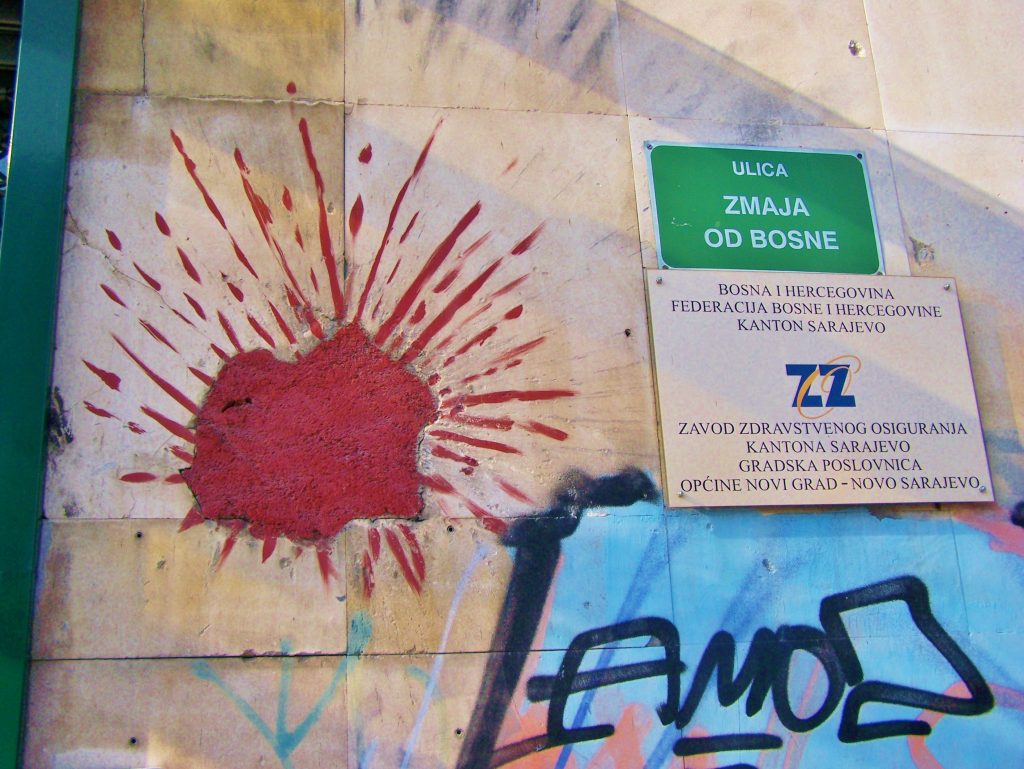
Nearly 20 years after war, the cityscape of Sarajevo remains riddled with bullet holes and shell craters in facades and pavement. These are the scars of Sarajevo.
If Sarajevo was a person, what would he look like? I imagine a man with slightly tousled black hair. The rough facial features would be accentuated by deep brown eyes that reflect a complex and spirited soul characterized by antagonisms with an ulterior melancholy. His charisma would attract many people with charming and warm base notes and bold top notes that make it easy for him to connect with others. His multi-layered and interesting impression would be amplified by tattoos and scars that mark all parts of his body.
What stories would a man called Sarajevo tell you? He could speak about crazy parties, delicious food and interesting encounters. He could also tell you about his deep spirituality and how he combines modernity with a sense for tradition and coexistence. Or maybe he remembers hard times full of suffering caused by war, or talks about his despair, because he far too often feels stuck in his life and has a deep inner conflict that sometimes erupts in aggression.
While a person is able to express one´s past experiences by telling stories, a city cannot. Usually, people are the ones telling the stories about a place. They do so by creating museums and monuments and narratives about the past and put it all in a certain frame until everything makes sense from their current point of view. There is another, more direct way of approaching the past, and one does not need museums or monuments to experience it. Just like a person, a city has its own body that has grown and changed over time. Just as grey hair or wrinkles can tell you something about a person, buildings and squares can provide information about a city’s history.
Nearly 20 years after war, the cityscape of Sarajevo is still marked by bullet holes and shelling craters: the scars of Sarajevo. Just as the scars on a human body tell us something about a person’s past, Sarajevo’s scars can reveal information about the city’s past. However, in order to understand the nonverbal language in which scars such as these speak to you, you have to change your mode of perception to notice all that remains around you. Otherwise, the scars will remain silent.
Open Scars of Sarajevo
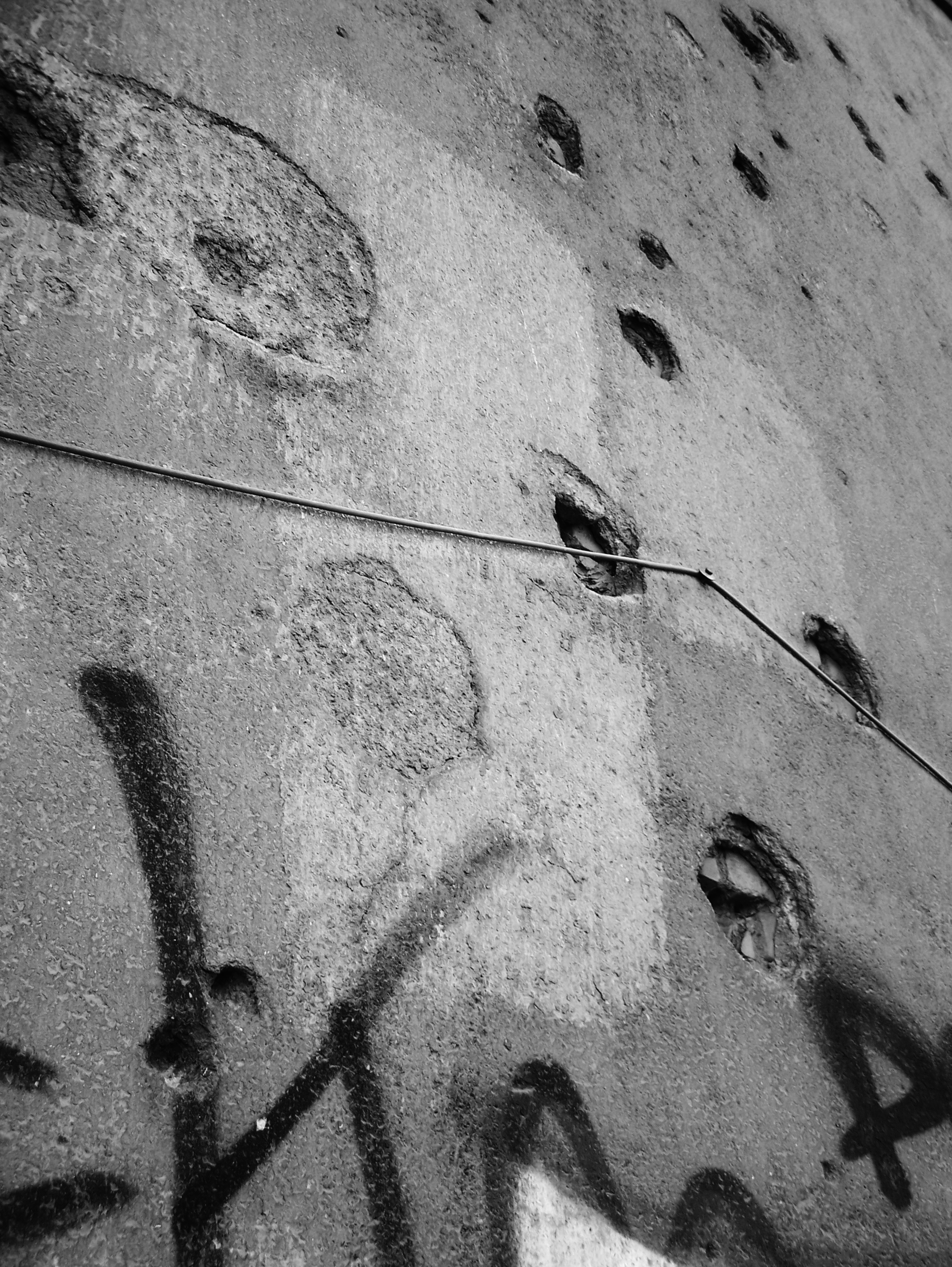
Many bullet holes and shelling craters are still visible. Outside of the city center, many facades have not yet been restored. These scars are the most visible remains of the Siege of Sarajevo that took place during the Bosnian War. Lasting 1425 days, from 5 April 1992 to 29 February 1996, it was the longest siege of a capital city in the history of modern warfare.
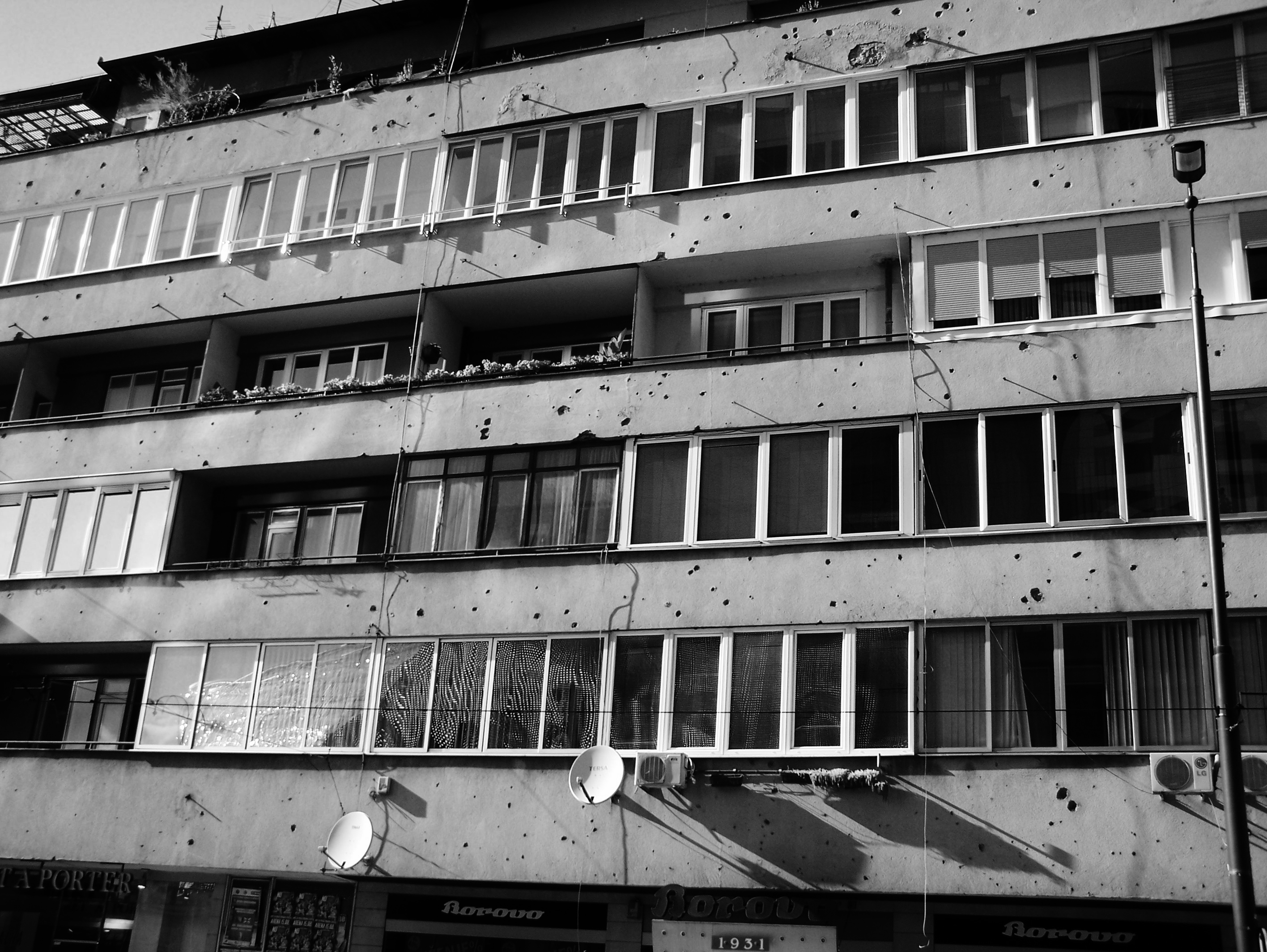
The scars vary in size and pattern. Sometimes, buildings are only punctured by only a few bullet holes. Other facades are heavily scarred by countless bullet holes and shelling craters. A variety of weapons were used during the siege, including mortars, tanks, anti-aircraft guns, heavy machine-guns, multiple rocket launchers, rocket-launched aircraft bombs and sniper rifles.
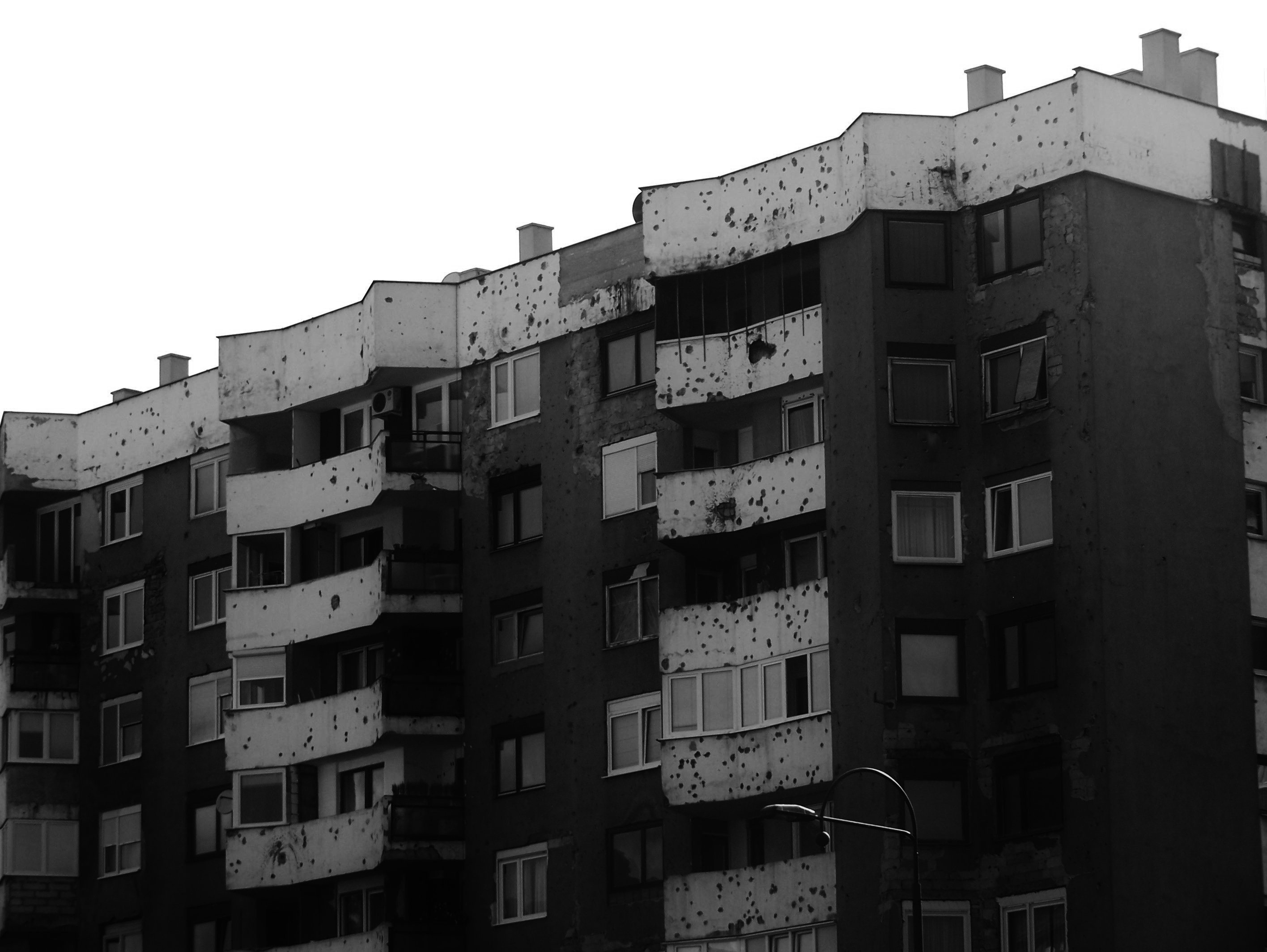
The unrepaired bullet holes and shelling craters confront the observer directly with the brutality of war.

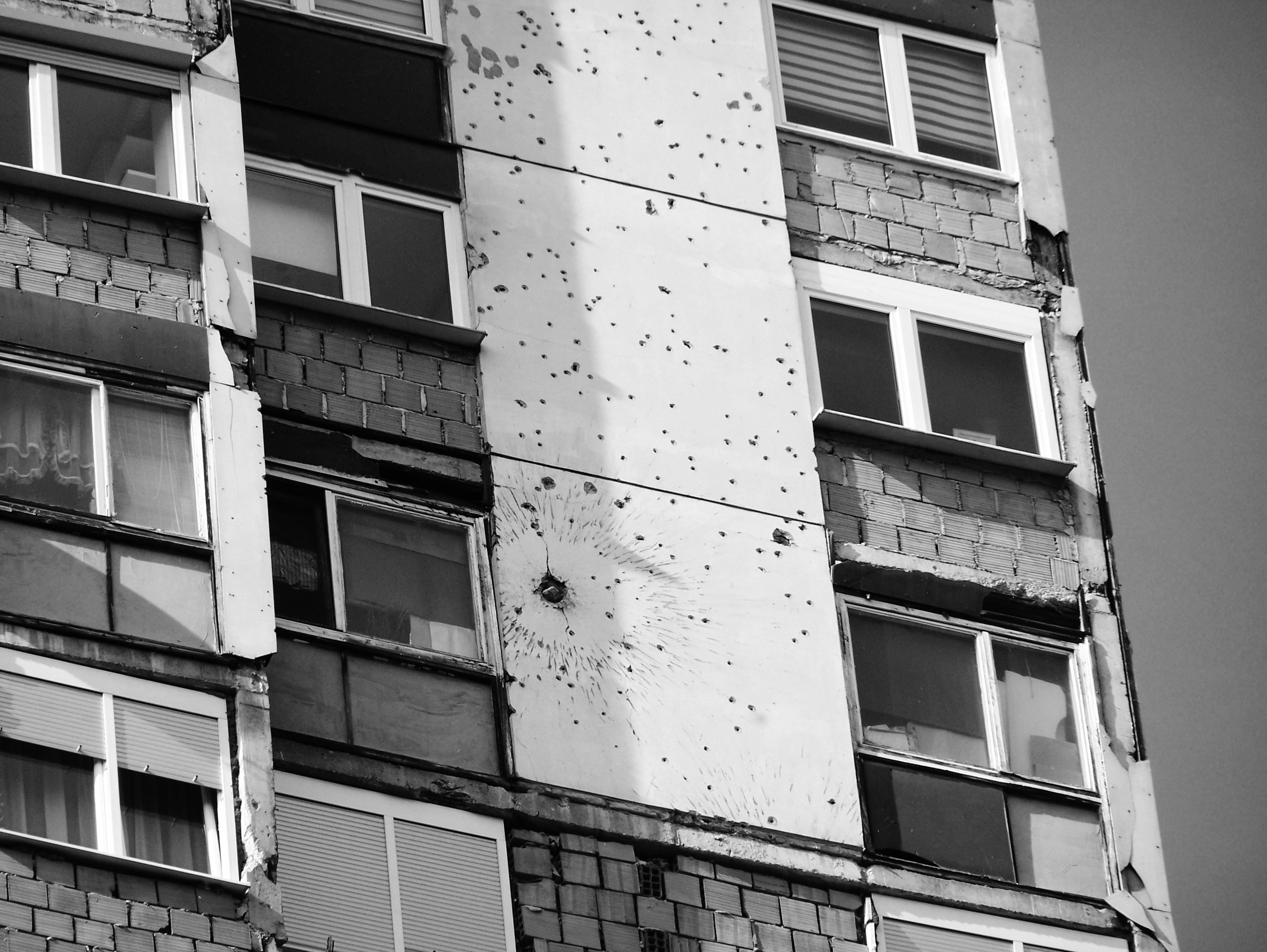
Concealed Scars
Many facades have been partially restored. Craters and bullet holes were filled by stones or mortar to protect buildings from further erosion. Even though these scars of the Siege have been covered, their origin is still apparent. In this way, the memory of the war is preserved while basic standards of restoration prevent the buildings from further damage.
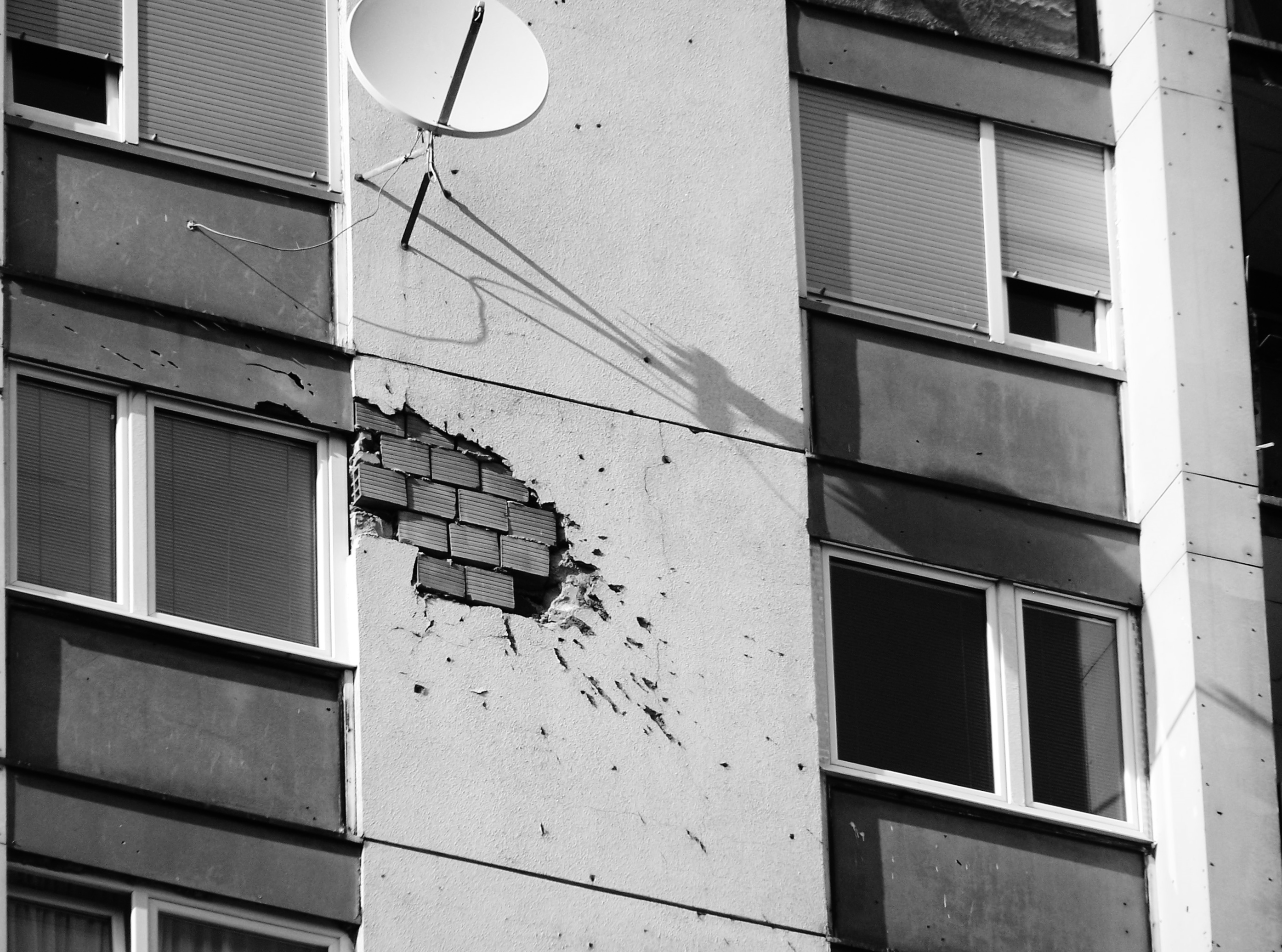
The sporadic coverage of holes and craters with mortar creates interesting, and sometimes bizarre, patterns. Some look like pieces of modern art, while others could be associated with acne scars. The coverage could diminish the power these craters have to confront the observer, and, as a result, the observer must use much more imagination to visualize the brutal origin of these scars.

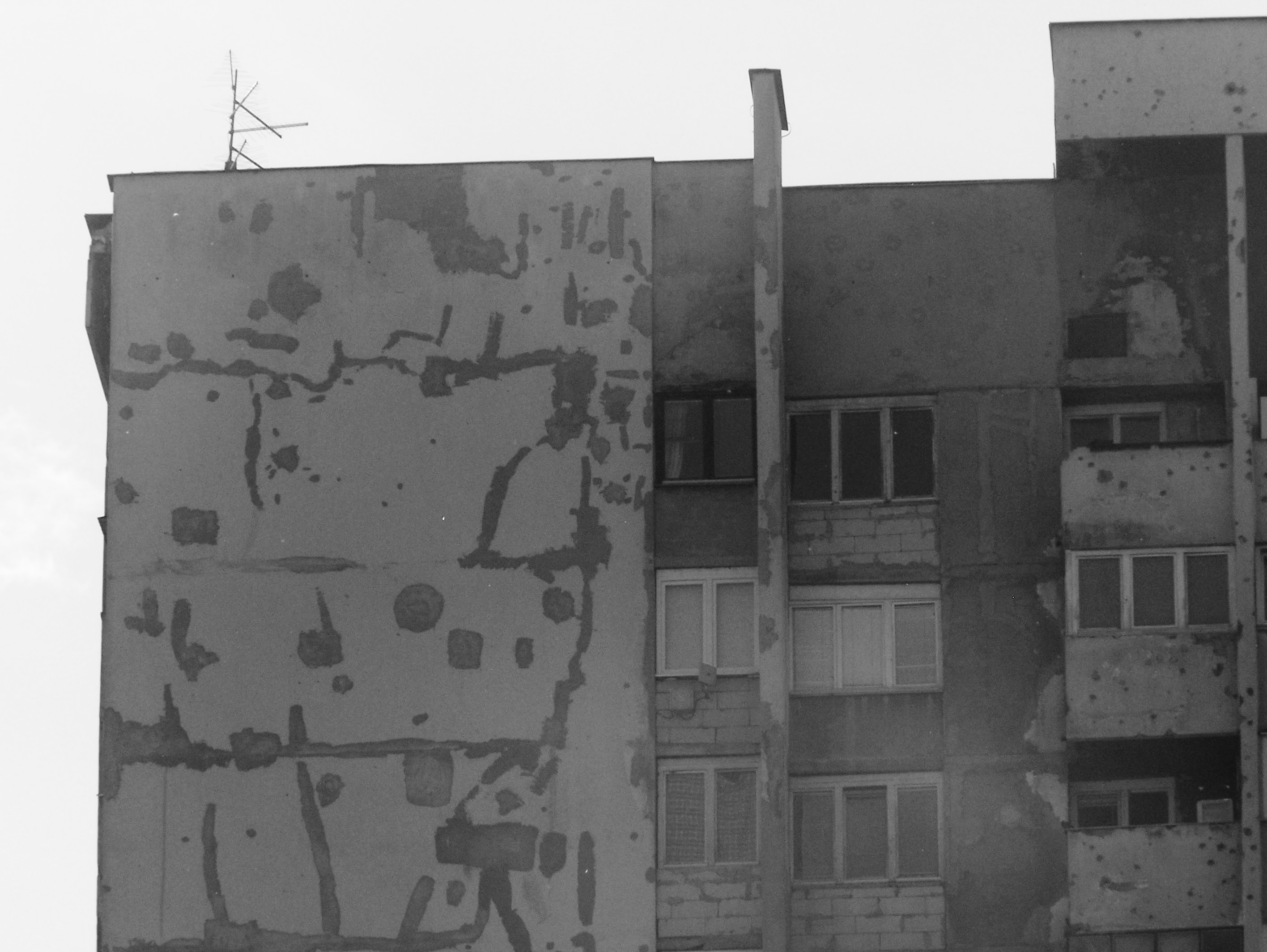
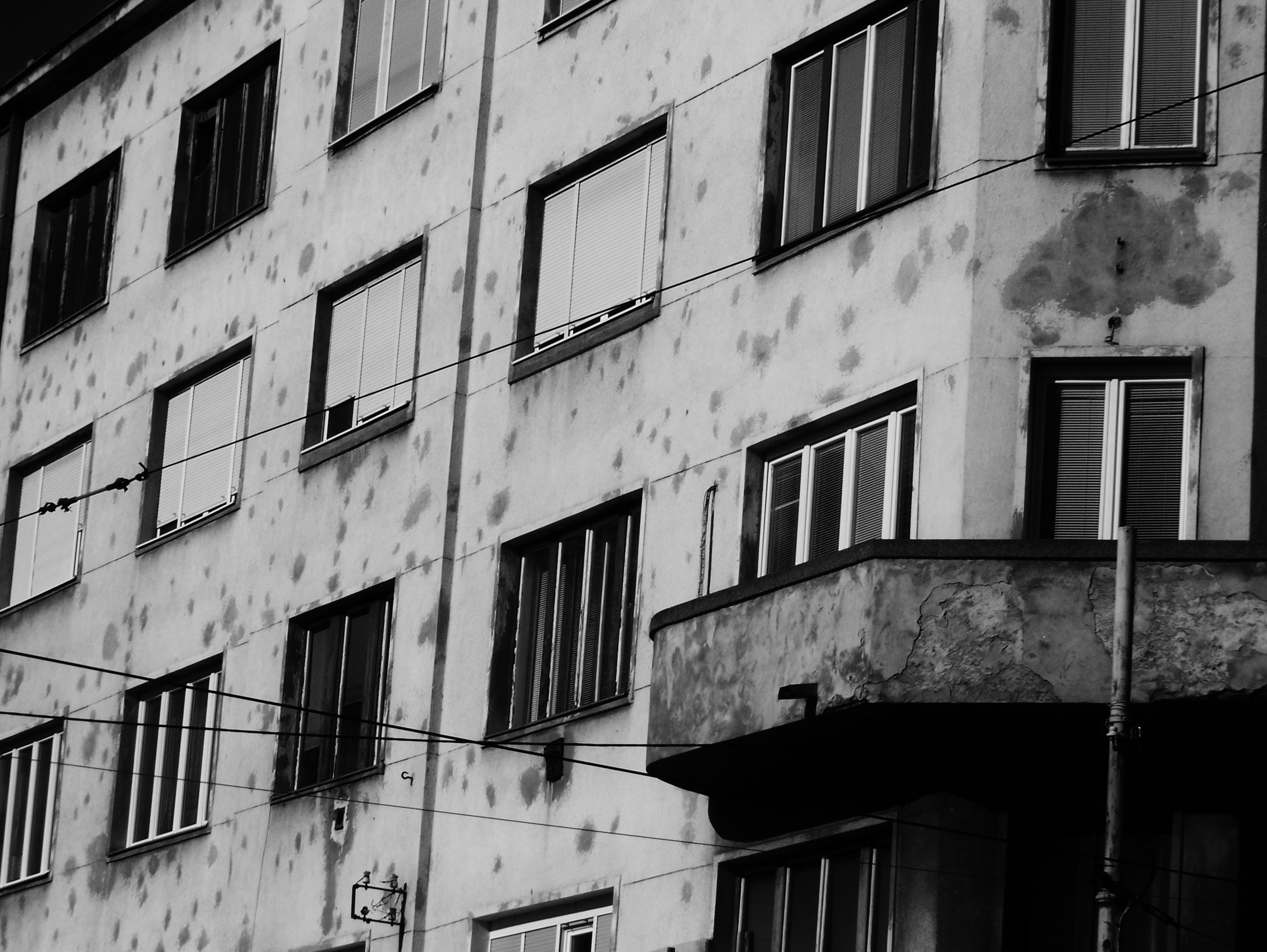
Scars Transformed
Some rare examples depict the transformation of bullet holes and craters for the purpose of delivering a specific message. In this way, citizens take ownership of their past by memorializing what remains of the Siege and by transforming it into something meaningful for the people of the present. Public space, in this sense, not only reveals something about the past of a city, but also provides you with modern impressions and interpretations of the city’s inhabitants.
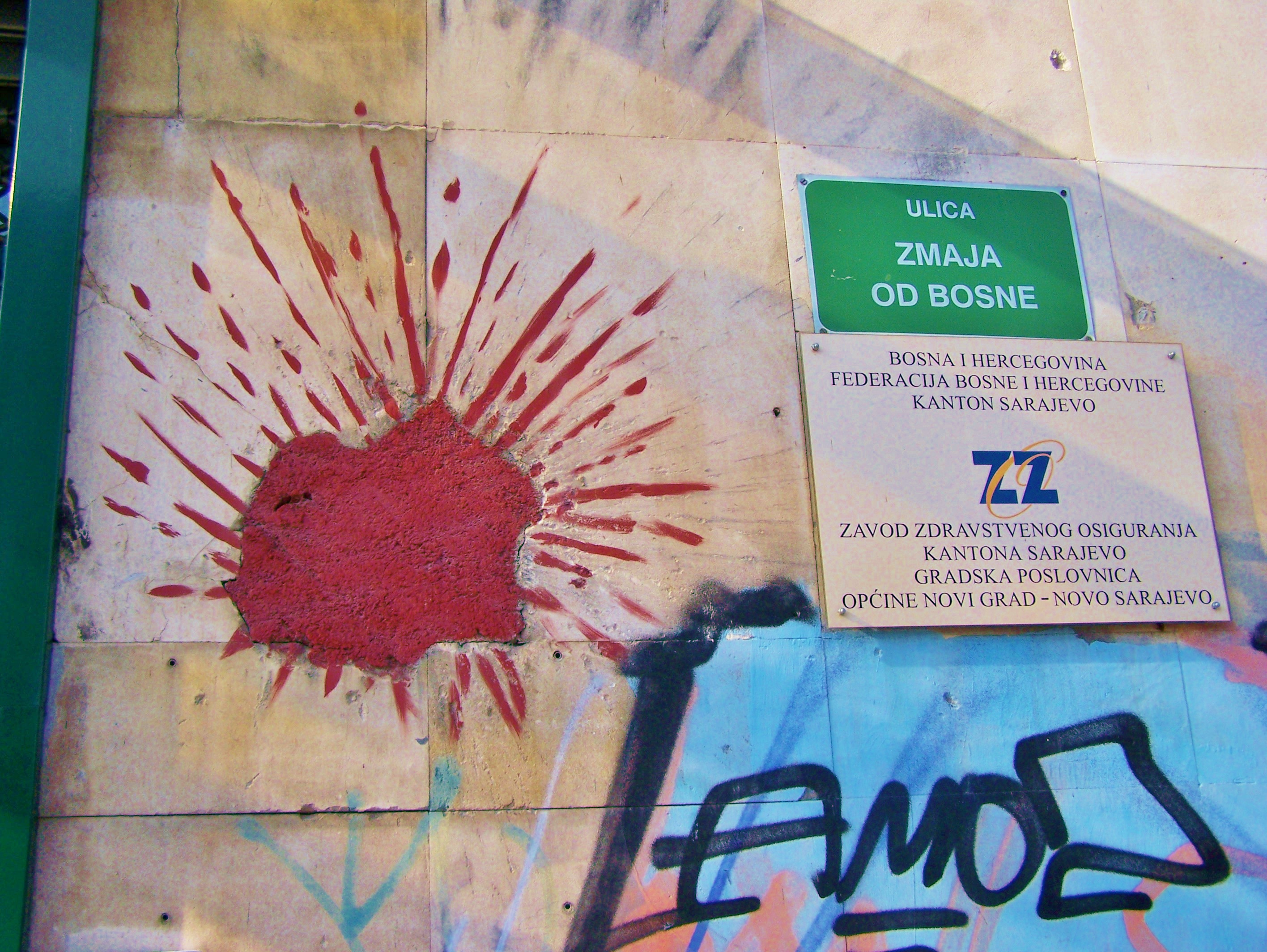
Sometimes, the scars are transformed in a way that amplifies an observer’s confrontation with the shelling craters. The above image shows a shelling crater filled with mortar and painted red to resemble the blood spatter that resulted from a deadly rocket shell. It is placed just to the right of the entrance of the city office of the Bosnian Health Care Fond.
The image is like the “Sarajevo Roses”. The Sarajevo Roses are shelling craters in the pavement that have been filled with red resin, as depicted in the next photograph. Each rose marks a place where at least three people died. In a country in which the sites of atrocities often lack any kind of formal memorial to commemorate them, these transformed scars can serve as memorials for the victims of the Siege. However, due to construction work, more and more roses are disappearing. Some activists and organizations have tried to stop this from happening. In 2012, the Sarajevo Canton signed a contract with a Bosnian company to reconstruct the Sarajevo Roses.
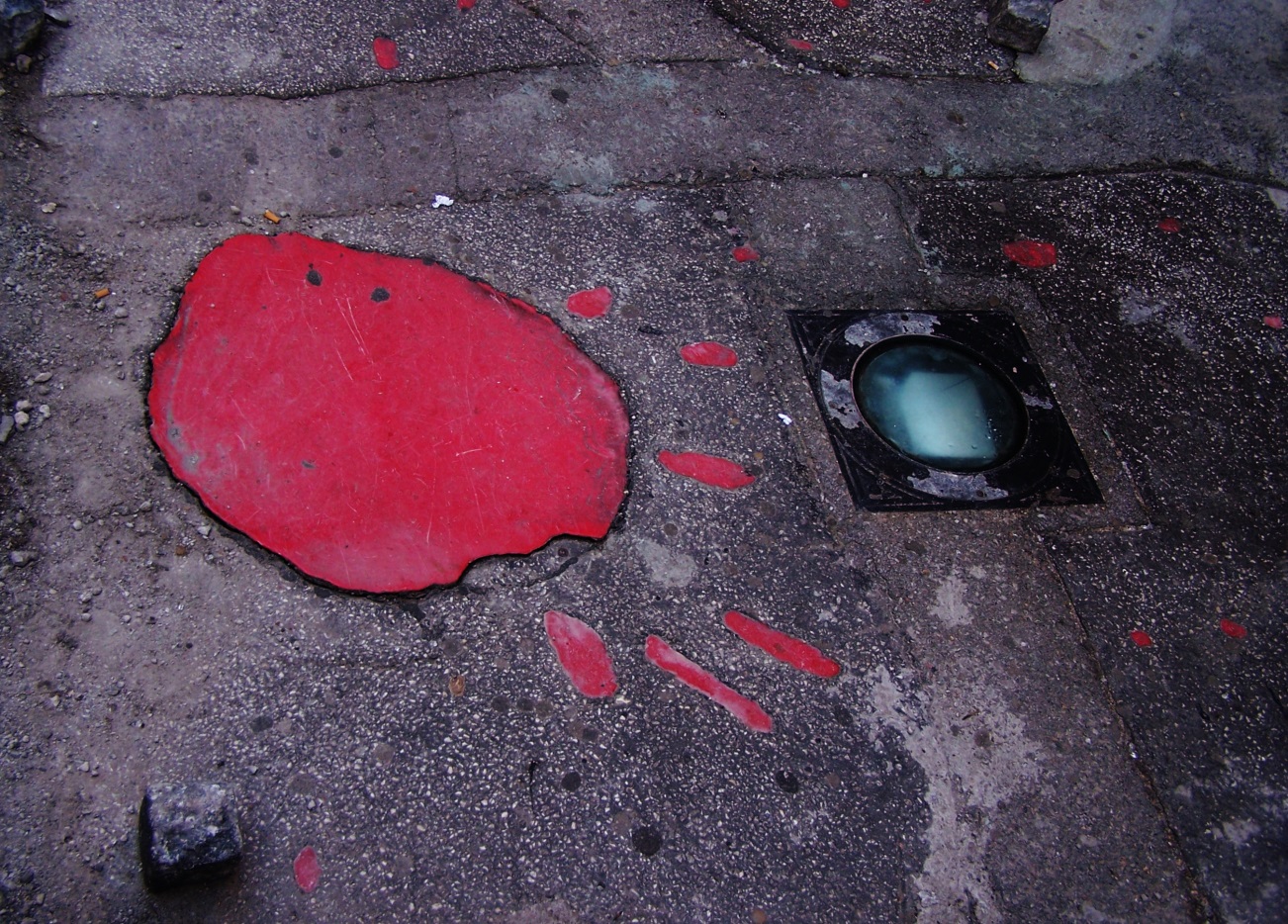
Graffiti is another way people have transformed bullet holes. In some cases, graffiti is used to convert the negative impression left behind by the bullet holes into something positive, for example, when bullet holes turn into the smiling face of a sun, as depicted in the next photo. In other cases, bullet holes are ignored when producing a piece of graffiti, but the scars remain visible even though the power of their expression may be diminished. In this sense, the scars merely serve as a background on a canvas waiting for the creations of future artists, while alluding to times past.

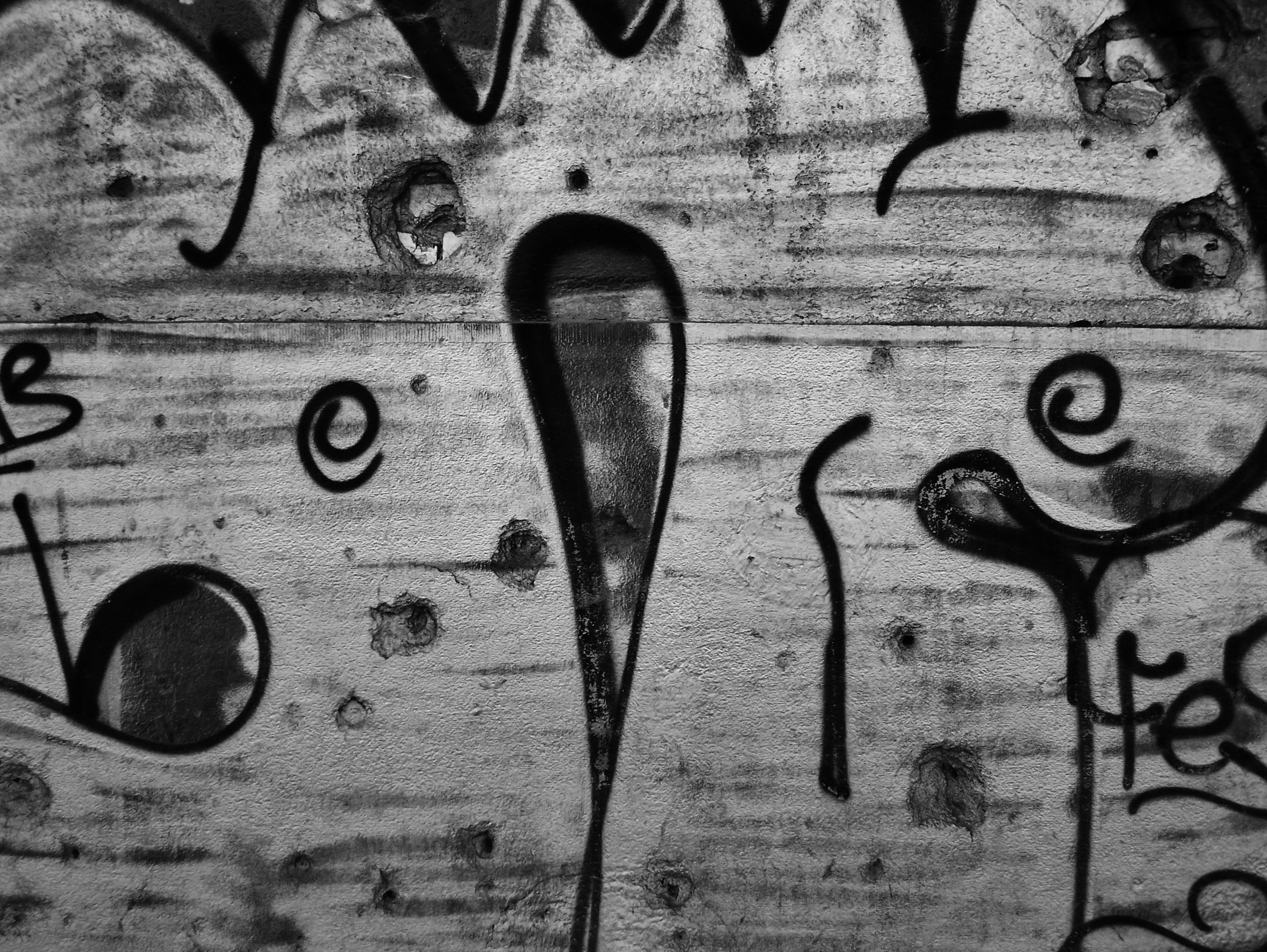
As a part of the art project Star City, the artist Edin “Edo” Vejselovic has transformed bullet holes into stars so as to create something beautiful. It is an example of how we can preserve the remains of war while turning them into something positive. His works can be seen on the wall above Galerija 10m2 and on the wall along the garden of the National History Museum. His photography has been displayed as a part of several art exhibitions.
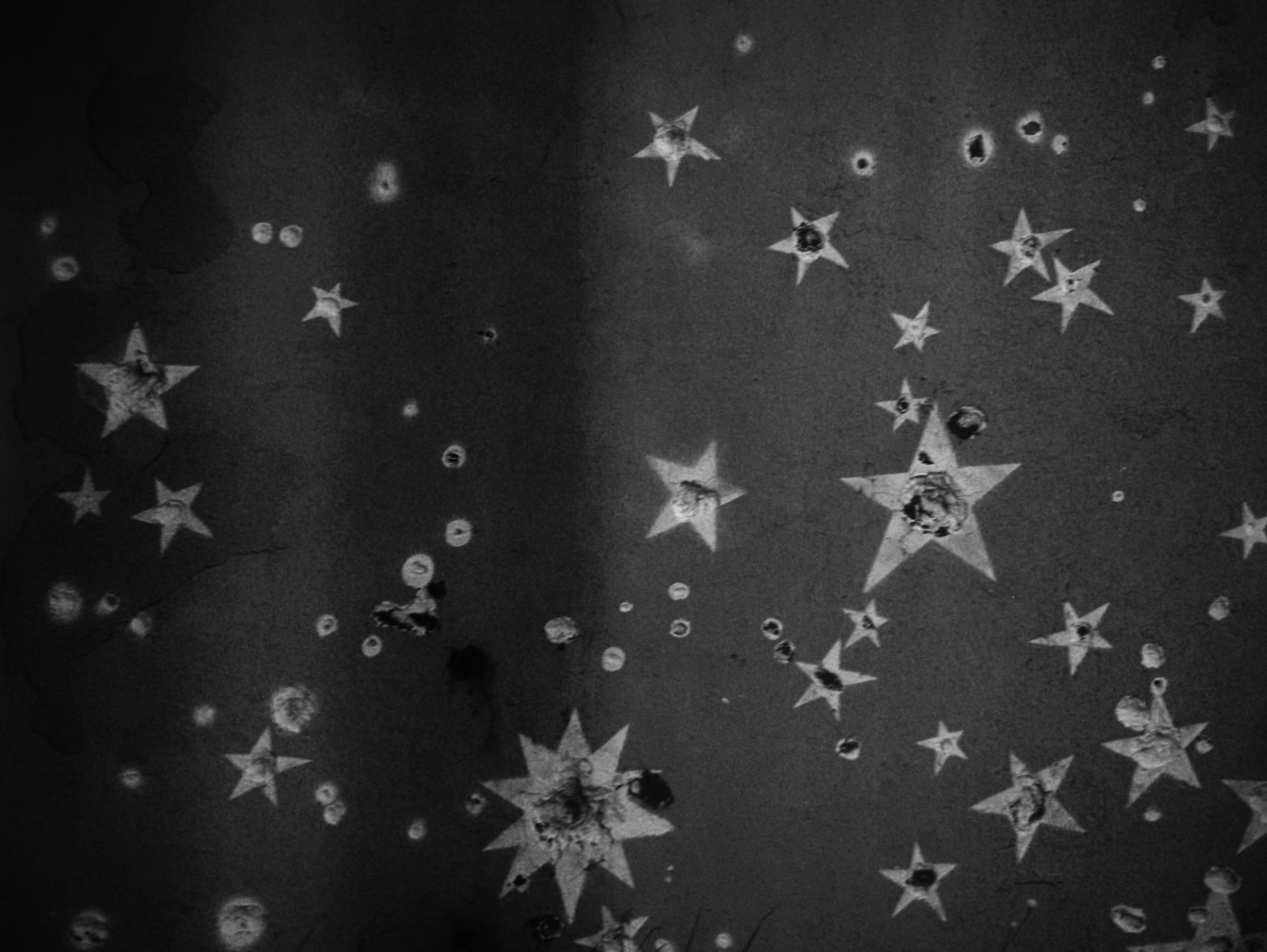

Healed Scars?
During the war, nearly the whole city was destroyed. Due to engagement by domestic and foreign investors, Sarajevo has run through a process of heavy reconstruction. Damaged buildings were rebuilt and nowadays, more and more modern buildings join the cityscape. Sarajevo has become one of the fastest growing cities in the region. Many of the scars have disappeared. While the city center is almost completely reconstructed, residential areas of Sarajevo are still in need of rebuilding. It is in these areas where one can find most of the scars that were once common throughout the city.
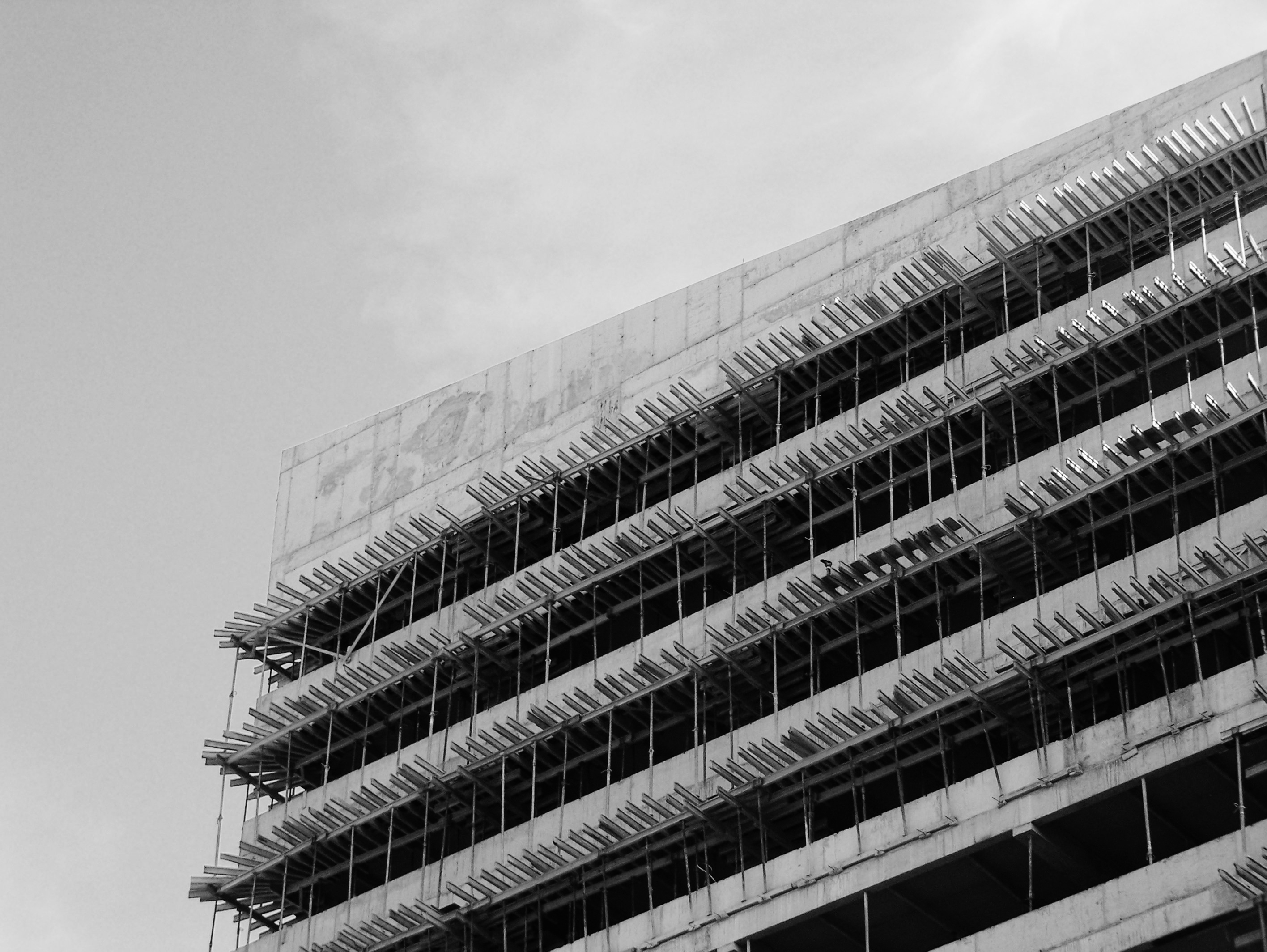
Most of the photos in this essay were taken along what was formerly known as Sniper Alley. During the Siege, this name was given to the main boulevard in Sarajevo that connects the city center to the airport and industrial areas. Due to the tall buildings and surrounding mountains, Sniper Alley provided snipers with their best targeting opportunities. While the upper part of the boulevard is lined with modern malls and banks, the lower part is less developed with the bordering residential areas still marked heavily by bullet holes and shelling craters.






